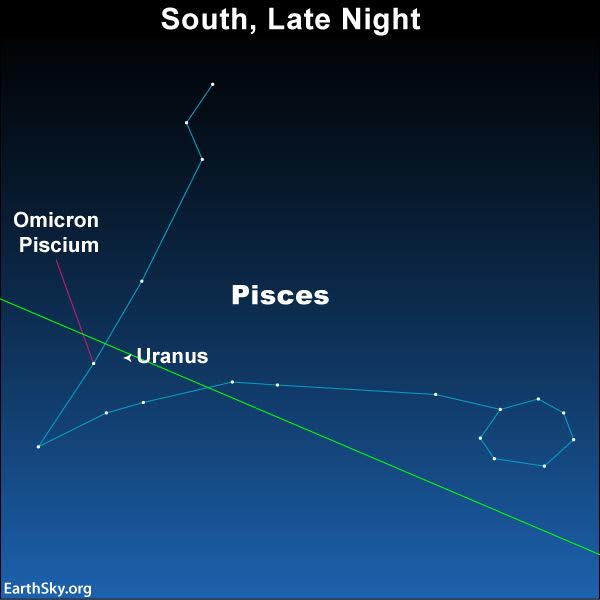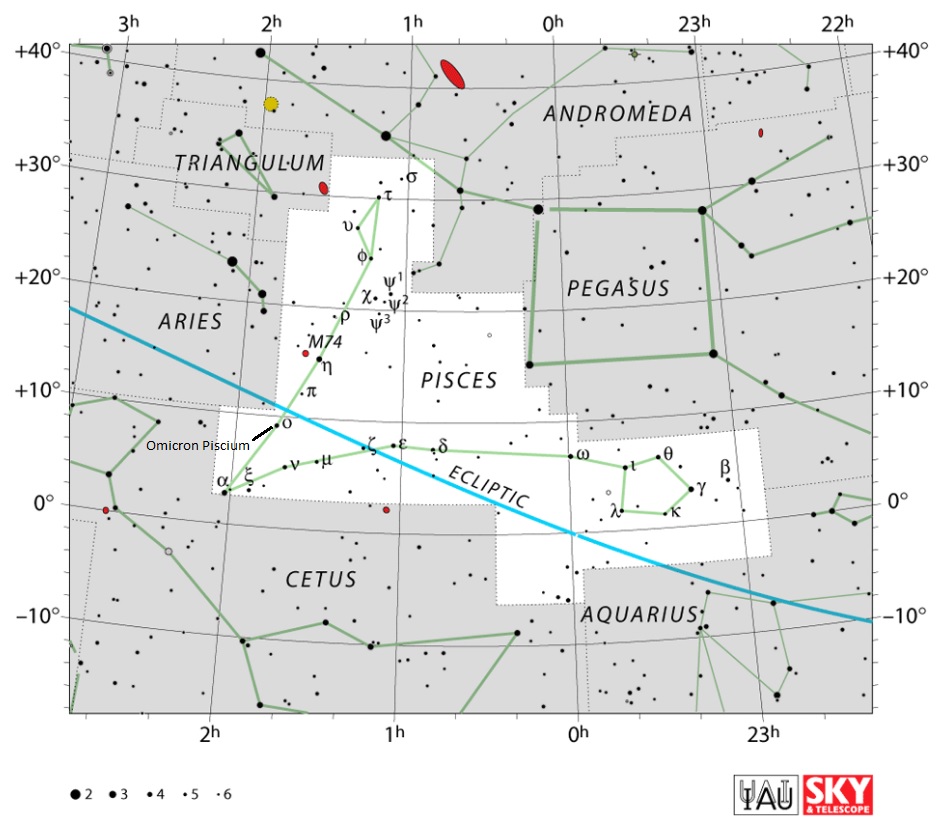
The planet Uranus, the 7th planet outward from the sun, reaches opposition on October 19, 2017. In other words, our planet Earth in its smaller, faster orbit swings in between the sun and Uranus on this date, placing us squarely in the middle of the best time of year to see this planet. Why? Because Uranus is now opposite the sun in our sky, rising in the east as the sun sets in the west.
Because Uranus is opposite the sun, it climbs highest up for the night at midnight (midway between sunset and sunrise) and sets in the west at sunrise. Not only does Uranus stay out all night long, but this world is now coming closest to Earth for the year and shining at its brightest best in our sky.
But even at its brightest, Uranus is still quite faint. It is barely perceptible as a dim speck of light to the unaided eye. At a magnitude of 5.68, Uranus shines no more brilliantly than the sky’s faintest stars. Given a dark sky free of light pollution, you might see Uranus with the eye alone – but only if you know right where to look for this distant world in front of the rather faint constellation, Pisces.
Click here for a detailed sky chart showing Uranus, via SkyandTelescope.com.
See it! Photos of Uranus at its 2017 opposition
EarthSky’s 2018 lunar calendars are here! Get your calendars 25% OFF this week.

As good fortune would have it, this year the new moon – a moon most nearly between the Earth and sun for this month – falls on October 19, too, at nearly the same hour that Uranus reaches opposition. The moon turns new at 19:12 UTC on this date. That means there is no moonlight to wash out the 2017 Uranus’ opposition. Take advantage of the moon-free night tonight because next year’s opposition of Uranus will fall on the same date as the full moon (October 24, 2018).
Even at its closest point to Earth, Uranus does not come particularly close to Earth. It’ll be just shy of 19 astronomical units away from Earth and 20 astronomical units from the sun. (By the way, one astronomical unit = sun/Earth distance). Click here to find out the present distance of Uranus and the other solar system planets.
Uranus is quite easy to view with binoculars, although it only looks like a rather faint star. Again, you have to know precisely where to look to find the 7th planet from the sun. Your best bet is to find a good sky chart and then star-hop from the 4th-magnitude star Omicron Piscium, which is fairly easy to see with the eye alone on a dark night, to the planet Uranus. Good luck!
Bottom line: On October 19, 2017, the planet Uranus reaches opposition and the moon turns new, providing a dark night for viewing Uranus in front of the constellation Pisces.











